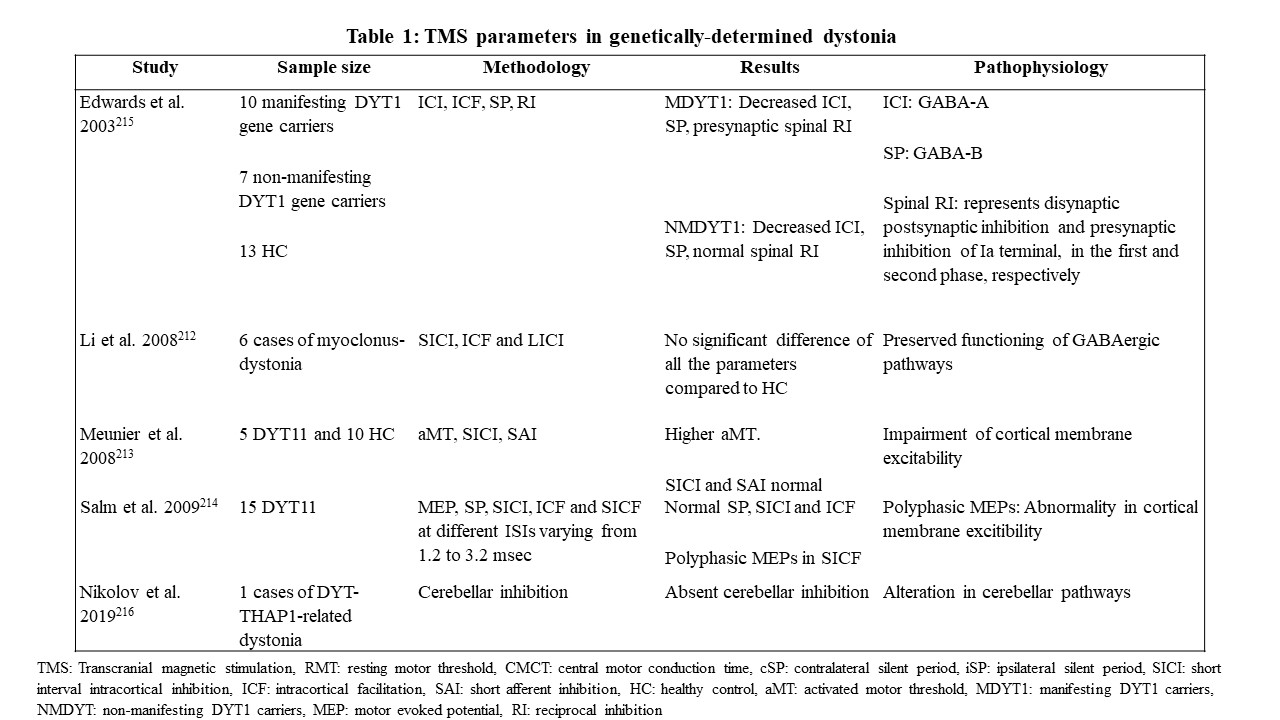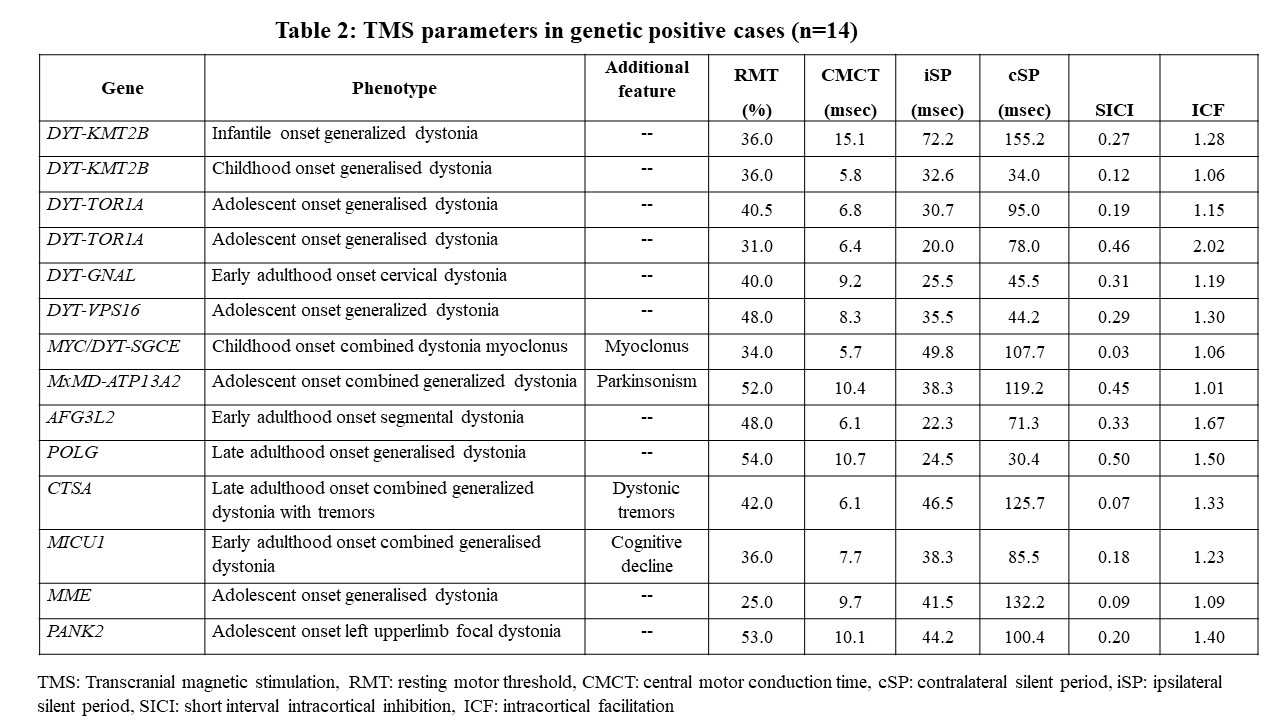Category: Dystonia: Pathophysiology, Imaging
Objective: To study the neurophysiological parameters in primary dystonia of presumed genetic etiology using transcranial magnetic stimulation (TMS) and correlate with their genotype.
Background: The literature on various TMS measures in primary dystonia, particularly in the generalized and genetically-determined subgroup are not well elucidated and conflicting.1–5[Table 1]
Method: Patients of primary dystonia of presumed genetic etiology were recruited from May 2021 to September, 2022 after institute ethical clearance and informed consent. Patients with isolated task-specific dystonia, blepharospasm, epilepsy, in-situ implants, and severe motor disability were excluded. TMS was performed utilising single and paired pulse paradigms. An equal number of age and sex-matched healthy controls were recruited. The parameters included resting motor threshold (RMT), central motor conduction time (CMCT), contralateral (cSP) and ipsilateral silent period (iSP) on single pulse stimulation. Paired pulse parameters comprised short interval intracortical inhibition (SICI) and intracortical facilitation (ICF). Patients underwent whole exome sequencing based on standard pipeline.
Results: Out of 65 patients, 36 and an equal number of healthy controls underwent TMS. The mean age of patients was 36.6±13.5 years. Single pulse TMS showed a significant reduction of cSP (79.5±33.8 vs 97.5±25.4, p=0.020) and iSP (42.3±13.5 vs 53.8±20.8, p=0.003) compared to healthy controls. There was no significant difference in RMT and CMCT (p=0.136 and p=0.060, respectively) or correlation with motor or disability scores. In the paired pulse paradigm, SICI was significantly reduced (0.38±0.23 vs 0.51±0.24, p=0.006, respectively) while there was no significant difference in ICF (p=0.078). Patients with generalized dystonia (n=20) had comparatively higher RMT (42.1±7.9 vs 37.1±6.4%, p=0.032) and lower values of SICI (0.36±0.21 vs 0.56±0.25, p=0.004). The genetic positive subgroup (n=14) had significantly reduced SICI (0.23±0.15 vs 0.51±0.23, p=0.001).
Conclusion: The study, one of the largest TMS research on primary dystonia consolidates the principle of loss of inhibition. It expands the literature to the generalized dystonia subtype, on which there are few studies. The higher RMT values could be attributable to greater membrane excitability. It further reveals unique TMS findings on several rare dystonia on which there is no previous data. [Table 2]
References: 1. Edwards MJ, Huang YZ, Mir P, Rothwell JC, Bhatia KP. Abnormalities in motor cortical plasticity differentiate manisfesting and nonmanifesting DYT1 carriers. Movement Disorders 2006;21:2181-2186.
2. Li JY, Cunic DI, Paradiso G, Gunraj C, Pal PK, Lang AE, et al. Electrophysiological features of myoclonus-dystonia. Movement Disorders 2008;23:2055-2061.
3. Meunier S, Lourenco G, Roze E, Apartis E, Trocello JM, Vidailhet M. Cortical excitability in DYT-11 positive myoclonus dystonia. Movement Disorders 2008;23:761-764.
4. Nikolov P, Hassan SS, Aytulun A, Hartmann CJ, Kohlhase J, Schnitzler A, et al. Cerebellar Involvement in DYT-THAP1 Dystonia. The Cerebellum 2019;18:969-971.
5. van der Salm SMA, van Rootselaar AF, Foncke EMJ, Koelman JHTM, Bour LJ, Bhatia KP, et al. Normal cortical excitability in Myoclonus-Dystonia – A TMS study. Exp Neurol 2009;216:300-305.
To cite this abstract in AMA style:
D. Dhar, A. Bhattacharya, N. Kamble, V. Holla, R. Yadav, B. Muthusamy, P. Pal. Transcranial magnetic stimulation study in primary dystonia of presumed genetic etiology [abstract]. Mov Disord. 2023; 38 (suppl 1). https://www.mdsabstracts.org/abstract/transcranial-magnetic-stimulation-study-in-primary-dystonia-of-presumed-genetic-etiology/. Accessed December 15, 2025.« Back to 2023 International Congress
MDS Abstracts - https://www.mdsabstracts.org/abstract/transcranial-magnetic-stimulation-study-in-primary-dystonia-of-presumed-genetic-etiology/


